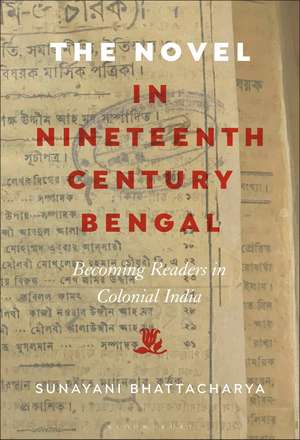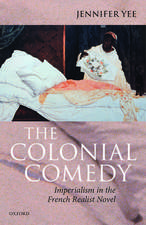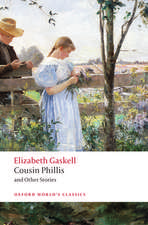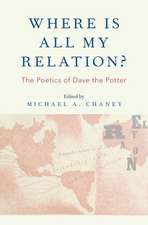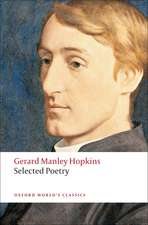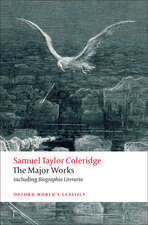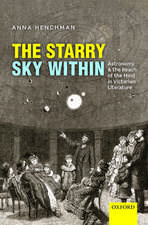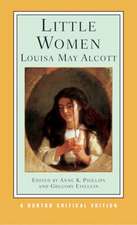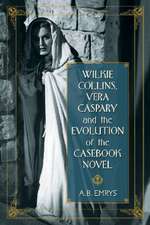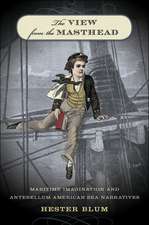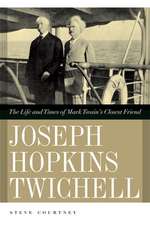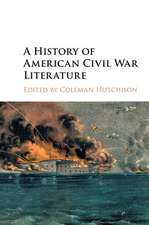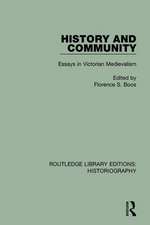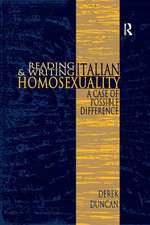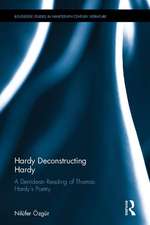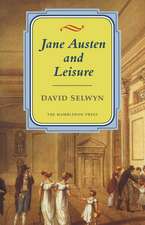The Novel in Nineteenth-Century Bengal: Becoming Readers in Colonial India
Autor Prof. or Dr. Sunayani Bhattacharyaen Limba Engleză Hardback – 9 aug 2023
Preț: 539.25 lei
Preț vechi: 773.38 lei
-30% Nou
Puncte Express: 809
Preț estimativ în valută:
103.20€ • 112.06$ • 86.69£
103.20€ • 112.06$ • 86.69£
Carte tipărită la comandă
Livrare economică 23 aprilie-07 mai
Preluare comenzi: 021 569.72.76
Specificații
ISBN-13: 9781501398469
ISBN-10: 1501398466
Pagini: 232
Dimensiuni: 152 x 229 mm
Greutate: 0.48 kg
Editura: Bloomsbury Publishing
Colecția Bloomsbury Academic
Locul publicării:New York, United States
ISBN-10: 1501398466
Pagini: 232
Dimensiuni: 152 x 229 mm
Greutate: 0.48 kg
Editura: Bloomsbury Publishing
Colecția Bloomsbury Academic
Locul publicării:New York, United States
Caracteristici
Provides a corrective to the view that the Bengali novel was read like its Victorian counterpart, instead showing that 19th-century Bengali readers read novels using aesthetic and literary frameworks foreign to the Victorian novel
Notă biografică
Sunayani Bhattacharya is Associate Professor of English at Saint Mary's College of California, USA. Her research areas include postcolonial studies, world literature, global Anglophone studies, and novel studies. She has published her work in the Comparative Literature journal and in several edited volumes.
Cuprins
AcknowledgmentsIntroduction: Establishing the Problem - Reading as a Practice1. Breaking the Cycle of Bad Readers: Battala Literature, Colonial Pedagogy, and the Idea of Education 2. Becoming a Reader: Letters, Reviews, and Memories of Reading3. Dear Reader, Good Sir: The Reader and Bankim's Novels4. Another World of Reading: Hossain and Islamic Bengali ProseConclusion: The Novelty of ReadingBibliographyIndex
Recenzii
Moving away from scholarly accounts that associate the rise of the novel solely with nationalism, The Novel in Nineteenth-Century Bengal is a fascinating account of the history of modern Bengali and of Bengali print culture, shifting focus from individual writers to the multiple worlds of readers. Deeply researched using archival as well as literary sources, this book offers a deep dive into the practices, ideals, and misconceptions surrounding reading, identity, and class in the 19th century.
This timely and innovative book charts the trajectory of the Bengali novel in colonial India by focusing on reading not as a universal experience, but as an everyday practice. The Novel in Nineteenth-Century Bengal constitutes a vital addition to the study of South Asian writing by exploring systematically the fascinating question of how Bengalis thought about reading. It challenges the canonical role occupied by literature as a form of national affiliation, and advocates for a much-needed investigation of the practices of reading as material embodiments of religious, aesthetic, and linguistic intersections.
How did the multilingual literary landscape of nineteenth-century Bengal shape the Bengali novel? Bhattacharya tells the story of the Bengali novel not through the English language experiments of its most famous practitioners like Bankim Chandra Chattopadhyay and Mir Mosharraf Hossain. Instead, her book explores the reading strategies of the earliest readers, who drew on their familiarity with Sanskrit, Persian, Urdu, and Arabic traditions to read Chattopadhyay and Hossain's Bengali novels. A fascinating account of how readers are made and how unfamiliar literary genres are read.
This timely and innovative book charts the trajectory of the Bengali novel in colonial India by focusing on reading not as a universal experience, but as an everyday practice. The Novel in Nineteenth-Century Bengal constitutes a vital addition to the study of South Asian writing by exploring systematically the fascinating question of how Bengalis thought about reading. It challenges the canonical role occupied by literature as a form of national affiliation, and advocates for a much-needed investigation of the practices of reading as material embodiments of religious, aesthetic, and linguistic intersections.
How did the multilingual literary landscape of nineteenth-century Bengal shape the Bengali novel? Bhattacharya tells the story of the Bengali novel not through the English language experiments of its most famous practitioners like Bankim Chandra Chattopadhyay and Mir Mosharraf Hossain. Instead, her book explores the reading strategies of the earliest readers, who drew on their familiarity with Sanskrit, Persian, Urdu, and Arabic traditions to read Chattopadhyay and Hossain's Bengali novels. A fascinating account of how readers are made and how unfamiliar literary genres are read.
